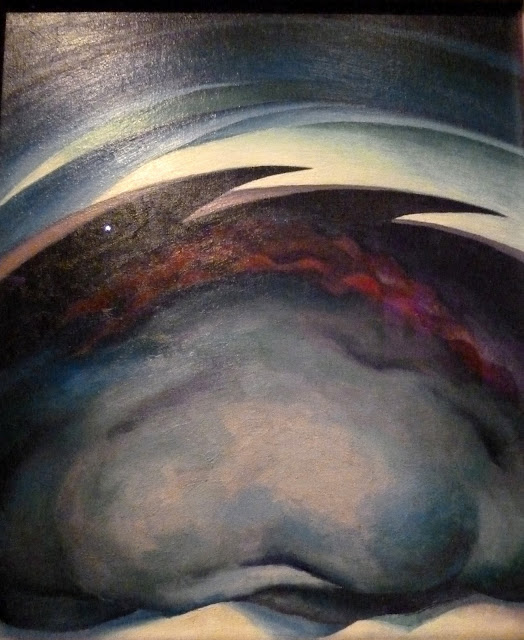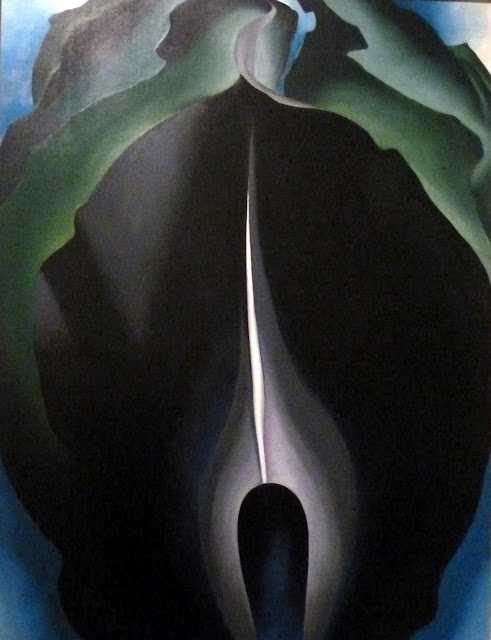at the Fondazione Roma Museo - Palazzo Cipolla.
The early works:
These works show her use of a new expressive style, a new interpretation of abstraction.
Red Mesa, 1917
Inside the Tent While at U. of Virginia, 1916
Untitled (Tent Door at Night), 1916
Evening Star No. IV, 1917
Blue Line II, 1919
From the Plains, 1919
The partnership with Alfred Stieglizt inspired a number of semi-abstract self-portraits:
Nude Series VII, 1917
The second period:
Here are the works painted during her time in New York, the period when she rose to fame in the art world.
Her partnership with Stieglitz, which culminated in their marriage in 1924, her rapport with photography, her fascination with the architectural shapes of the city, all resulted in the creation of new works.
New York City with Moon, 1925
To get away from the Freudian interpretations of her abstract works given by the critics, O'Keefe began to represent natural elements like fruit, flowers, landscapes and trees, using a boldly innovative, macroscopic perspective. These are a celebration of the sensuality of the forms of the natural world, revolutionising the traditional portrayal of floral subjects.
From the Lake, 1924
Corn, No. 2, 1924
Calla Lillies on Red, 1928
Dark Iris, No. 2, 1927
White Iris, No. 7, 1957
Jack-in-the-Pulpit, No. IV, 1930
Purple Petunias, 1925
White Calla Lillies, 1924
Open Clam Shell, 1926
Closed Clam Shell, 1926
After a Walk Back of Mabel's, 1929
The third period:
Photograph by Alfred Stieglitz, 1932
This third period of her work, 1929 onwards, is her time spent in New Mexico. The vast spaces, exotic colours and unusual forms of this landscape immediately became a new source of inspiration.
Black Mesa Landscape, New Mexico, Out Back of Marie's, 1930
On the Old Santa Fe Road, 1930-31
*
Horse's Skull on Blue, 1931
Horse's Skull with White Rose, 1931
Summer Days, 1936
Yellow Cactus, 1929
Black and White, 1920
Photograph taken by Ansell Adams
The fourth period:
This is her late period from the 1950s onwards. She began to paint her house in Abiquiu. One of the themes that inspired her work in this period is travel and they show her return to her early abstract approach.
In 1972 she began to have problems with her sight but she continued to paint, but with assitance this time.
My Last Door, 1954

































No comments:
Post a Comment